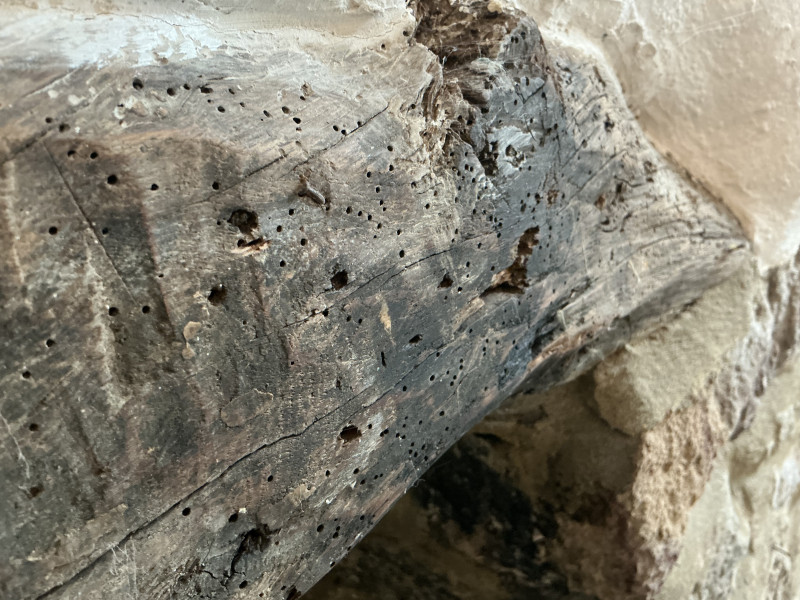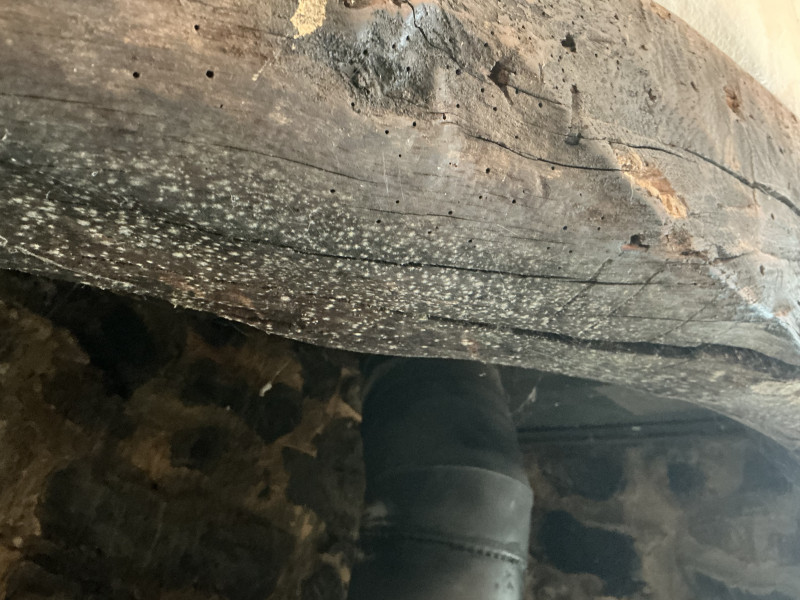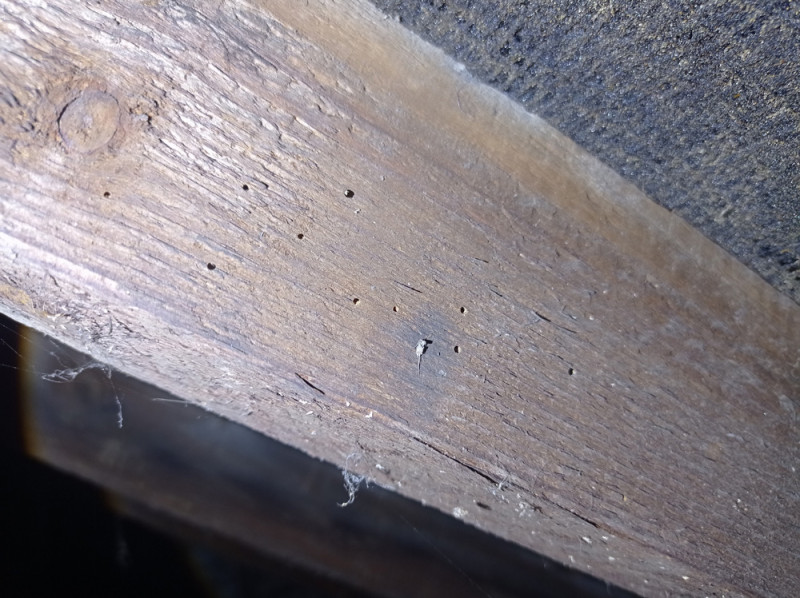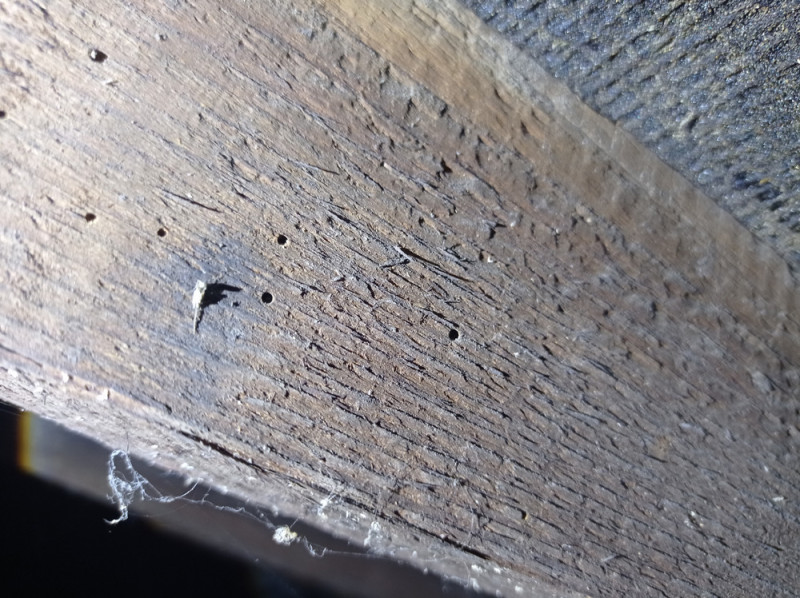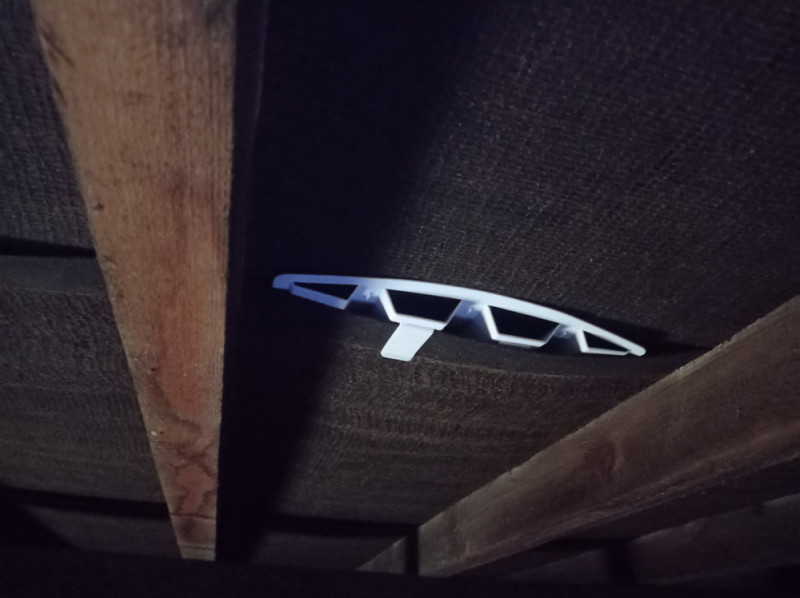What Is Woodworm?
"Woodworm" is a general term used to describe the larvae of various species of wood-boring beetles that feed on timber. You might also hear terms like:
- Wood-boring beetles
- Timber pest
- Anobium punctatum (the Common Furniture Beetle)
- Insect attack
- Frass (powdery residue left by feeding larvae)
- Flight holes (tiny round holes on timber surfaces)
These insects lay their eggs in or on timber, and once hatched, the larvae burrow through the wood, weakening its structure over time.
What Do Our Surveyors Look For?
During a survey, we visually inspect all accessible timbers - typically in lofts, under floors, and in roof voids. Where access is restricted or visibility is limited, we may recommend further investigations.
Our surveyors are looking for two main types of evidence:
1. Historic Woodworm
This usually appears as old flight holes, sometimes accompanied by dry, powdery frass. Timbers with historic signs of infestation are not necessarily a current concern, but we may recommend:
- Checking for guarantees from any previous timber treatment
- If no guarantee is available, precautionary treatment might be advised
2. Active Infestation
- Fresh frass (light-coloured, powdery wood dust)
- Recent or irregular flight holes
- Live insects or larvae
- Crumbly or weakened timber
Where we suspect ongoing infestation, we’ll advise specialist investigation and possible treatment.
Why Does Woodworm Occur?
Wood-boring insects are more likely to target timber in damp or poorly ventilated environments. That's why we don't just look at the wood - we also consider the surrounding conditions.
Key contributing factors:
- High humidity in roof spaces or floor voids
- Poor ventilation
- Extractor fans discharging moist air into lofts
- Leaking pipes or roofs
- Blocked sub floor vents
- Lack of roof eaves ventilation
- Raised ground levels
If we detect signs of excess moisture or poor airflow, our report may include recommendations to:
- Improve ventilation in lofts and voids
- Redirect extractor fans to expel moist air outside
- Address leaks or insulation issues contributing to trapped moisture
Controlling humidity levels in roof and floor voids can go a long way in reducing the risk of insect attack and other timber decay.
Summary
Woodworm is a common yet manageable issue. At both Level 2 and Level 3 surveys, we’ll:
- Inspect visible and accessible timbers for signs of insect activity
- Flag any evidence of historic or active woodworm
- Recommend further investigations or treatments if needed
- Highlight conditions (like high humidity or poor ventilation) that could increase risk
Our goal is to give you peace of mind - and if action is needed, to help you make informed decisions.
